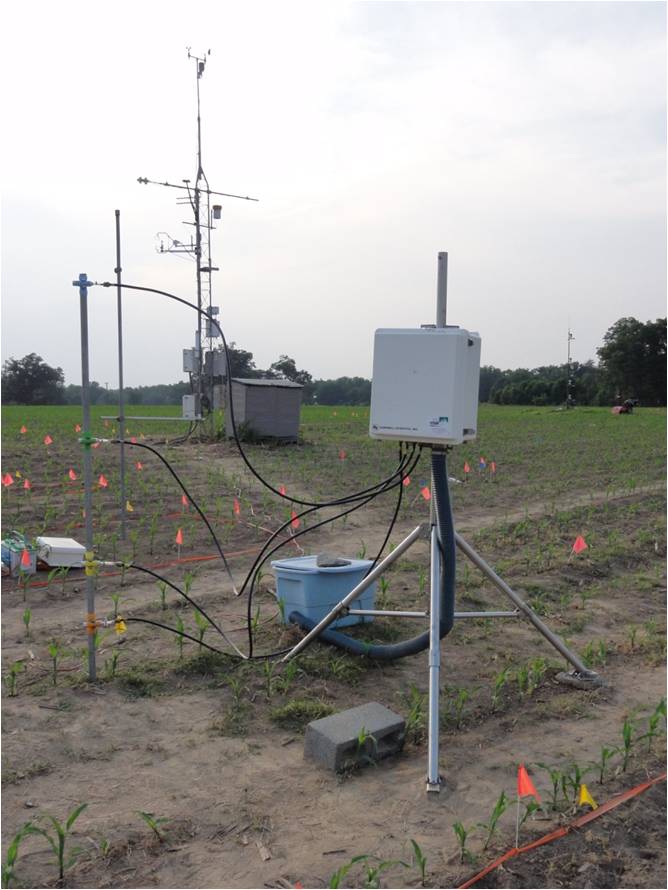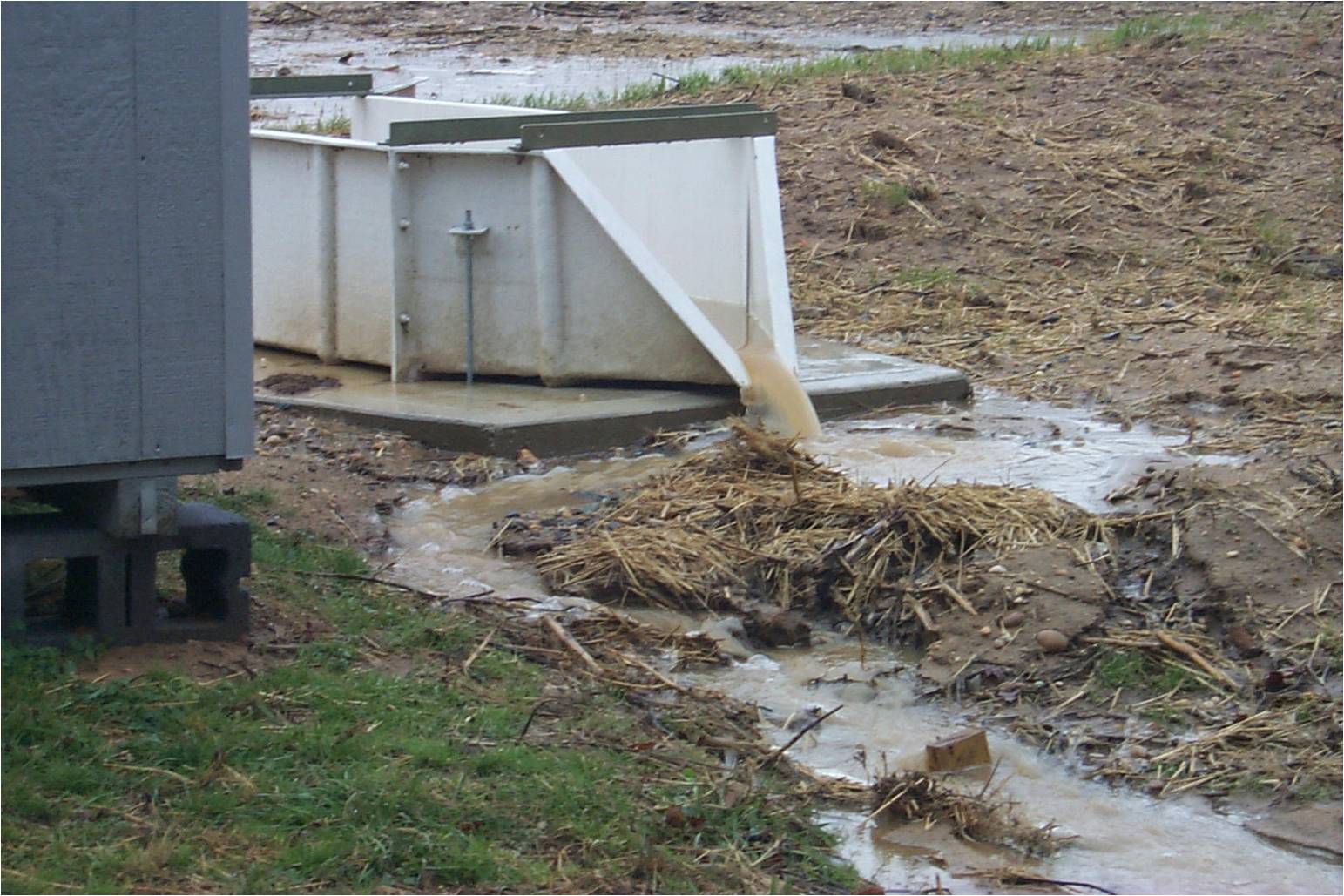Relevance of Pesticide Volatilization
The impact of transport pathways on the fate of pesticides in the environment

Instrumentation for measuring pesticide vapor losses: pesticide manifold with lines to the 2 m pesticide flux tower. The eddy covariance system is in the background.
|
Recent accomplishments:
-
Impact of meteorology on herbicide volatilization determined: Multi-year investigations using eddy covariance data and turbulent flow theory demonstrated the importance of meteorological variables and surface soil condition on field-scale herbicide (metolachlor) volatilization losses. This study showed that after only 5 days, 5 to 25% of the applied herbicide was lost to the environment via volatilization and that surface meteorology and surface soil water contents governed the extent of that loss. Publication: Prueger, J.H., Gish, T.J., McConnell, L.L., McKee, L.G., Hatfield, J.L., and Kustas, W.P. Solar radiation, relative humidity, and soil water effects on metolachlor volatilization. Environ. Sci. Technol. 39:5219-5226. 2005.
-
Relationship of soil moisture and temperature on herbicide volatilization quantified: A 3-year study was conducted to determine the impact of surface soil water content on herbicide (metolachlor) volatilization. Results demonstrate that a doubling of the surface soil water content (top 5-cm) resulted in more than a doubling of the cumulative day time herbicide volatilization losses. When soils were moist, increases in soil temperature resulted in dramatic increases in herbicide volatility. However, when soils were dry, increases in temperature had essentially no impact on herbicide vapor losses. Publication: Gish, T.J., Prueger, J.H., Kustas, W.P., Hatfield, J.L., McKee, L.G. and Russ, A.L. Soil moisture and metolachlor volatilization observations over three years. J. Environ. Quality. J. Environ. Qual. 38:1785–1795. 2009.
|

An H-flume where water, nutrient and pesticide surface runoff fluxes are measured. |
-
Herbicide volatilization much greater than runoff losses: For over 10 years the relevance of volatilization has been investigated by comparing herbicide vapor emissions to herbicide surface runoff losses at the field-scale. Although occasionally over 3%, over a 10 year period herbicide runoff losses for the entire growing season were generally less than 1% of that applied. At the same time cumulative herbicide volatilization losses, after only 5 days, ranged from 5 to 63% of that applied for metolachlor and 2 to 12% of that applied for atrazine. Statistical analysis revealed that herbicide volatilization losses were significantly larger than surface runoff (P < 0.007) and when averaged over the two herbicides, loss by volatilization was more than 25 times larger than surface runoff losses. Publication: Gish, Timothy J., John H. Prueger, Craig S.T. Daughtry, William P. Kustas, Lynn G. McKee, Andrew L. Russ, and Jerry L. Hatfield 2011. Comparison of Field-scale Herbicide Runoff and Volatilization Losses: An Eight-Year Field Investigation J. Environ. Qual. 40:1432–1442. 2011.
-
Utility of thermal remote-sensing to estimate pesticide volatilization: The long-term dataset collected at OPE3 provides the foundation for research investigating the usefulness of remote sensing-based models to estimate pesticide volatilization losses on the field to regional scales. While initial studies have verified the conceptual model, research to refine the model algorithms are ongoing. Presentation: Alfieri JG, Gish TJ, Prueger JH, Kustas WP, McKee LG, Russ AL, Hatfield JL, 2012: Evaluation of the interrelationship between pesticide and turbulent energy fluxes and the implications for remotely-sensed estimates of pesticide volatilization. American Meteorology Society Conference on Agricultural and Forest Meteorology, Boston, MA. [a PDF of the presentation will be linked here.]
Contact:
Tim Gish, timothy.gish@ars.usda.gov, 301-504-8378
John Prueger, john.prueger@ars.usda.gov, (515) 294-7694
Craig Daughtry, craig.daughtry@ars.usda.gov, 301-504-5015
Joe Alfieri, joe.alfieri@ars.usda.gov, 301-504-5673
|